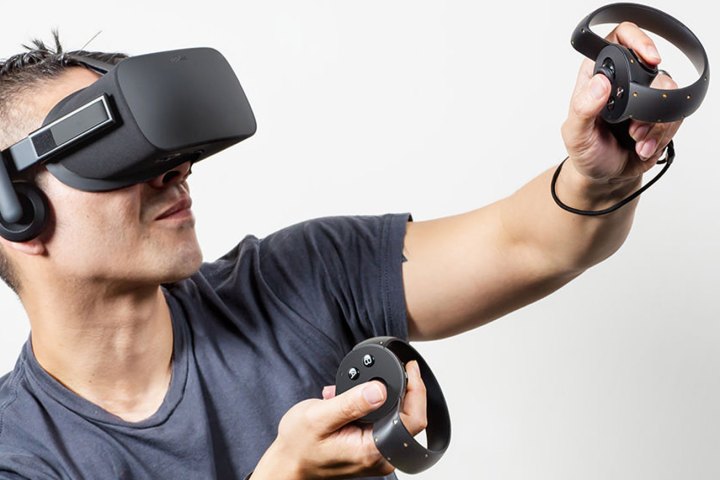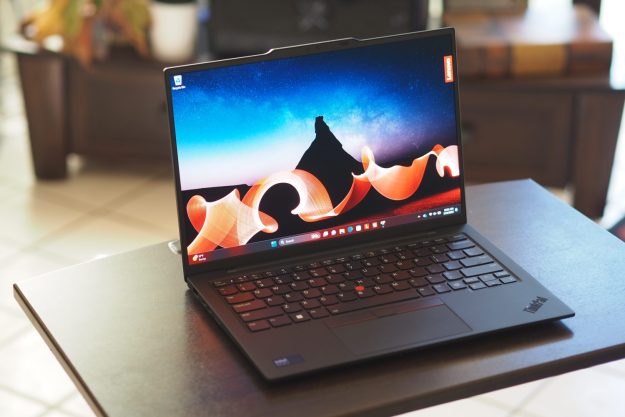
To solve this limitation, Intel installed a RealSense sensor into the front of its Project Alloy headset for object detection within the physical space. This allow users to seemingly roam freely uncaged. The HTC Vive takes a different approach by employing virtual walls via external “lighthouses” that emit infrared light the headset tracks to keep users caged within a specific physical space. Now, Oculus VR is reportedly working on a caged confinement system of its own for the Rift headset.
In the case of the HTC Vive, the headset uses what Valve Software calls the “Chaperone” system. Before jumping into the virtual universe, users must clear a space in the desired room of up to 16 feet squared (6.5 feet by 5 feet at the very least). This physical space is thus tracked by two external IR base stations that install barriers within the virtual realm. Thus, users can move about freely in the defined physical space without worrying about bumping into knee-bashing objects.
And that’s a big difference between the Vive and the Rift: The latter doesn’t officially support room-scale movement detection. The Rift comes packed with a single infrared sensor meant for placement of at least three feet away from the headset. That setup definitely doesn’t scream “room-scale” experience. As a result, customers looking for a full, out-of-the-box room-scale experience may bite the bullet and sink their hard-earned cash into the pricier HTC Vive.
Oculus VR, however, unleashed an Oculus Home update at the end of July. This update sets users up for the upcoming Touch controller by increasing the Rift’s external sensor input from one individual unit to four units, as each Touch controller will come bundled with an additional sensor. There doesn’t seem to be any means to acquire additional sensor units outside the upcoming Touch bundles just yet.
A recent report states that a system similar to HTC’s “Chaperone” method for the Vive is in the works over at Oculus VR. This version has reportedly been in the works for some time, and was first revealed at a conference back in June while Oculus VR founder Palmer Luckey hosted a four-player match of Dead & Buried that demonstrated the use of the upcoming Touch controller.
“Palmer Luckey pulled me aside and asked if I had noticed anything peculiar about this particular build of the game,” reports Ben Lang. “After saying I hadn’t, he urged me to put the headset back on and then walk to my left. After few steps, I saw a horizontal floating line appear in front of me about stomach-height. As I traced it with my eyes to the left, I could see that it encompassed me entirely, appearing like a square with rounded corners.”
This line, according to the report, blended into the overall Western theme of Dead & Buried, appearing as barbed wire. This little detail indicates that developers can shape these virtual boundaries to fit within specific experiences so that that users are completely immersed. The system provided with the HTC Vive, on the other hand, can be customized by the user.
Unfortunately, that’s all we know about the upcoming system for the Rift. Additional details will likely be revealed at the company’s “Connect” developer conference in October.


